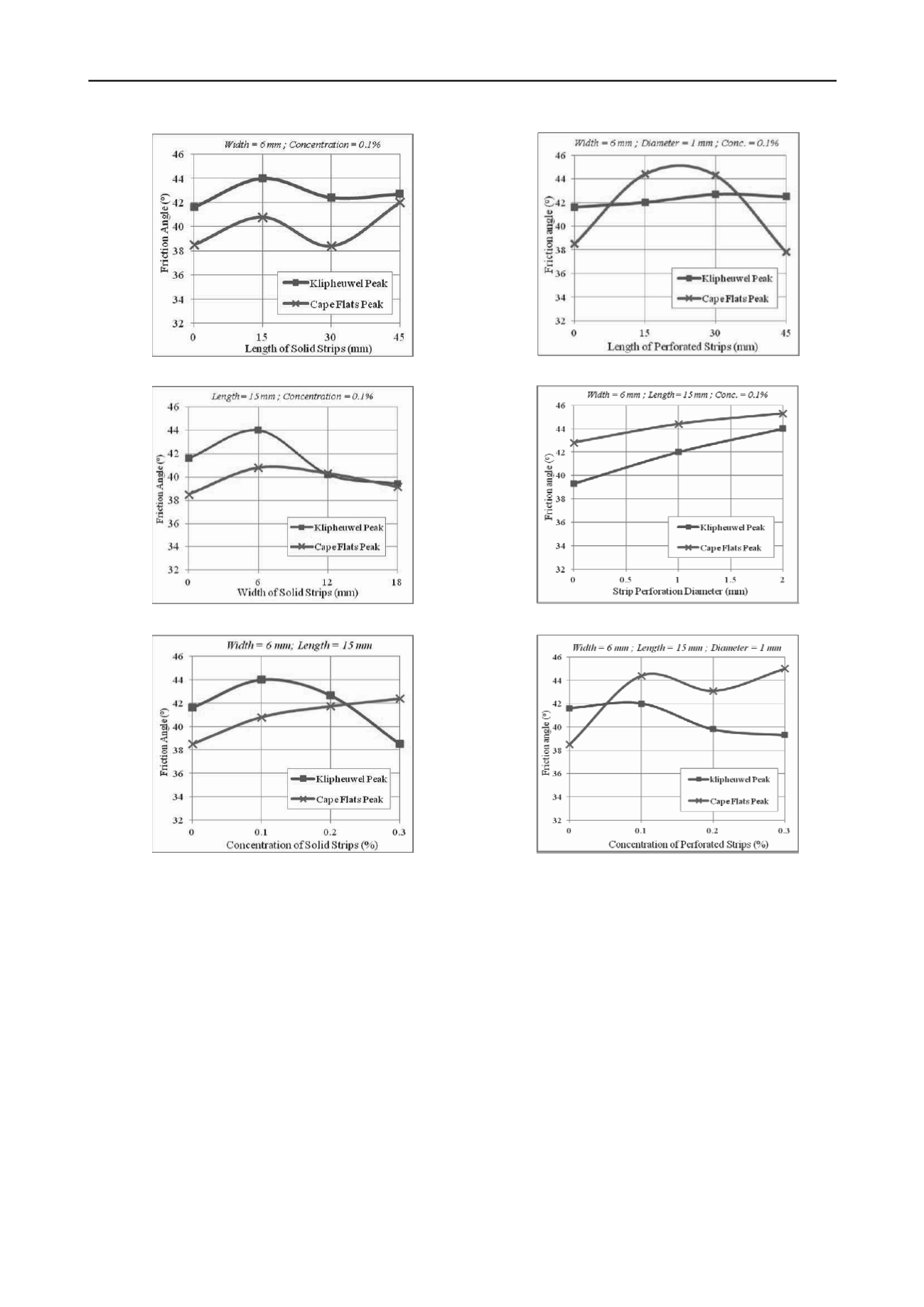
3225
Technical Committee 307 /
Comité technique 307
Figure 3a: Friction angle vs Solid strip length
Figure 3b: Fiction angle vs. Width of solid strips
Figure 3c: Friction angle vs. Concentration of solid strips
3.2
Perforated Strips
Introducing perforations on the strips achieved higher friction
angles with additional increases of 3.5% and 18.0% on
inclusion of the perforated strips in Klipheuwel and Cape Flats
sand respectively. This was represented by improvements from
41.6
o
to 44
o
for Klipheuwel sand and 38.5
o
to 45.3
o
for the Cape
Flats sand (Figure 4a). The effect of varying the length of the
perforated plastic strips was more significant in Cape Flats sand.
Addition of the reinforcement generally had a bigger impact as
regards improvement of the shear strength parameters for the
more round shaped Cape Flats sand than for angular shaped
Klipheuwel grains. This indicates an inherent requirement for
reinforcement of the more poorly graded Cape Flats sand so as
to enhance its strength properties.
Varying the strip perforation diameter provided an increase
of up to 14.7% in Klipheuwel sand compared to using solid
strips and for Cape flats sand a further increase of 8.5% was
recorded (Figure 4b). This result indicated increases of 2
o
for
every additional mm in perforation diameter.
Figure 4a: Friction angle vs Perforated strip length
Figure 4b: Fiction angle vs. Perforation diameter
Figure 4c: Friction angle vs. Perforated strip concentration
The improvement in friction angle with perforation diameter
may be attributed to interaction between the soil and the plastic
in the composite as well as better bonding and interlocking
between the soil particles through the perforations in the plastic
strips.
An increase in the peak friction angle from 38.5
o
to 44.5
o
for
Cape Flats sand was obtained when perforated plastic strips
were added to the soil at a 0.1% concentration as shown in
Figure 4c. A concentration of 0.2% resulted in a slight decrease
and a further increase in concentration to 0.3% provided a
higher friction angle of 45.0
o
. The pattern in Klipheuwel
composites however indicated that addition of the perforated
strips at a 0.1% concentration caused a slight improvement in
friction angle but a decrease was observed for concentrations of
0.2% and 0.3%. This demonstrates that the influence of strip
concentration could be soil specific due to the difference in soil
properties like particle shape and size. Different soils would
therefore require specific testing to determine the parameters
particular to the soil type in order to obtain an optimal increase
in the shear strength parameters on inclusion of the plastic
strips.


